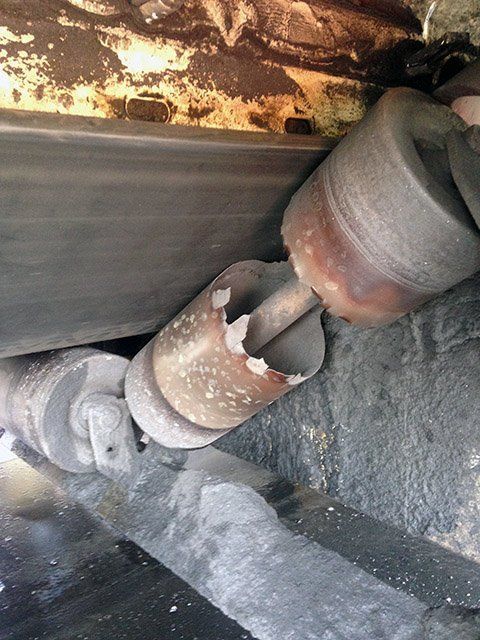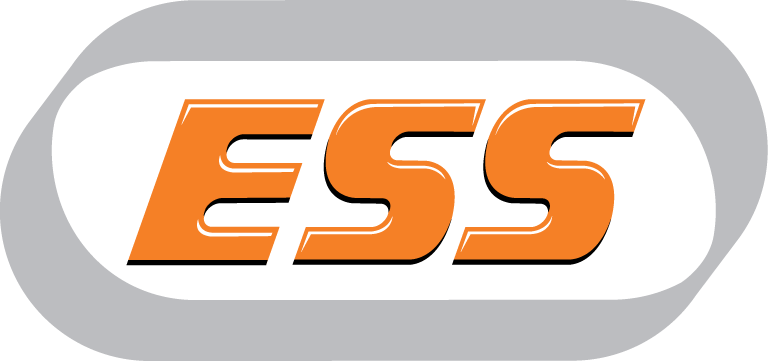Failed Idlers
When idlers fail, it can lead to various problems and disruptions in the conveyor system. ESS Engineering have a solution.
An idler is a non-powered rolling component used to support a conveyor belt on either the carry or the return side of the conveyor. Idlers fail or seize when the idler is clogged or buried under fugitive material that has fallen from the conveyor belt. Failed idlers create a number of safety risks, especially during the replacement of idlers. Replacing failed idlers often involves working from heights, working in exposured areas increasing the risk of heat stroke, and working in confined spaces.
Failed Idlers
Replacement
To remove an idler, the idler frame must be removed from the belt, and are typically heavy especially with the added weight of the conveyor belt, which increases manual handling risks.
Removing frozen or seized idlers is essential as exposure to seized idlers creates additional stress on the conveyor drive motor, and increased wear of the conveyor belt.
Friction between the frozen idler and the conveyor belt wears away the case of the idler creating sharp edges, which in turn causes damage or excessive wear to the belt, shortening conveyor belt life considerably and increasing replacement costs.
To increase the life of idlers, a conveyor belt must reduce spillage and carryback that wears and clogs the conveyor idler. This includes correct belt tracking, effective sealing systems, and belt cleaning system to reduce carryback.
All these devices require consistent and involved maintenance and monitoring to ensure optimum efficiency. Idlers will eventually seize or break down.

To combat the difficulty and time taken in changing an idler, change outs should be replaced with retractable idler frames, which allow for the easy removal of idlers as it disengages them from the belt. This reduces the effort needed to slide the idler out for replacement.
Is your site 100% efficient?
Our branches in major mining centres provide the technology and expertise to get your fugitive material problems under control. Our ESS service technicians offer on-site surveying services, troubleshooting, and monitoring of conveyor accessory components. We also train on-site staff to recognise safety hazards and identify solutions.
ESS Products & Solutions
To increase the lifespan of conveyor idlers, it is important to reduce spillage and carryback, which can cause wear and clogging. This requires proper belt tracking, effective sealing systems, and a belt cleaning system.
ESS R&D Innovations
-
Belt Cleaning SystemsList Item 1
At ESS, our mission is to create advanced and efficient products to improve your productivity and reduce downtime. We provide three types of belt cleaners - primary belt cleaners, secondary belt cleaners, and return belt cleaners, each designed to cater to the specific requirements of different conveyor belt applications.
-
Impact BedsList Item 2
Secondary belt cleaners are designed to remove residual material that remains after the primary cleaning process. They are installed behind the drive pulley and ensure that excess debris does not adhere to the belt and cause issues like belt misalignment, increased wear, and operational inefficiency.
-
Belt Support and Idler SystemsList Item 3
ESS provides a range of change idler solutions that simplify the installation of replacement idlers, particularly in confined spaces or areas with narrow walkways. These solutions are also useful for conveyors that are elevated above land or sea. It is also recommended to install a sealing support system between the idlers beneath the loading point to stabilize the belt. This system should be installed as far down the conveyor line as necessary.
-
Belt AlignmentList Item 4
Effective tracking solutions play an important role in maintaining proper conveyor belt alignment and preventing uneven loading, material spillage, and potential damage to the belt and conveyor components. In addition, correct belt alignment and tracking reduce wear and tear on the conveyor belt, which minimises the need for frequent replacements. When the belt stays aligned, it experiences less friction and abrasion against the conveyor frame and components, ultimately extending its lifespan.
-
Belt Sealing Systems
ESS Skirting and Sealing systems are commonly installed in loading zones to contain material, prevent spillage, and reduce dust emissions.
-
Regular Maintenance
ESS provides maintenance services that cover inspection, fine-tuning, spare parts inventory, and repair and replacement of parts for ESS and competitor equipment. Contract-based maintenance services are also available.
Call us today on 1800 074 446 for more details about our products and services.


